







![WM-e-Shop.com [ XADO-technology ]](../../images/total/head.gif)
|
Where does the essence of уюдн-technology lie?
For simplicity the workings of уюдн-technology can be broken down to the following stages:
- Initial conditions
- Superfinish operation and final grinding of уюдн-particles by the microrelief peaks
- Clearing up of the microrelief of contact spots of the mating parts
- Work-hardening by tight packing of the ground уюдн-particles into recesses of the microrelief of the mating surfaces of the parts
- New crystal growth
|
|
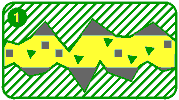 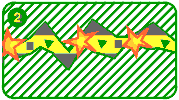  - standard lube - standard lube - particles of contaminants - particles of contaminants - metal particles - metal particles - microflash - microflash - уюдн particles - уюдн particles
|
Initially the rubbing and contact surface of the mating parts consists of peaks and recesses, clogged with various products of oil and additive decomposition (Fig.1). When the mechanism is put into operation, the loading brings the robbing surfaces together, microrelief peaks rupture the films formed by the oil and additives, and climb each other. As a result these break and contribute to the oil some metal particles, which also act as contaminants. At peak-breaking points occur microflashes, which spoil the oils and additives, turning these into contaminants (Fig.2). The next friction and contact episode will involve breaking of further microrelief projections, adding further portions of contaminants to the oil. |
|
|
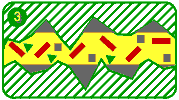   - standard lube - standard lube - particles of contaminants - particles of contaminants - metal particles - metal particles - уюдн particles - уюдн particles
|
Being compared with the microrelief peaks and recesses уюдн particles appear quite large (Fig.3). The microrelief peaks, like teeth of a sort of a mill, grind these. The grinding causes the microfusion and microwelding processes to intensify, as a large amount of said microprojections get broken by contact with уюдн particles. At the preak points at high temperatures (900-1200oC), as a result of micrometallurgical processes in a sort of microcrucibles, almost instantly proceeds a substitution reation leading to new crystal growth. Simultanuously the remaining metal mass acts to quickly transfer the heat produced away from the contact zones. This is a requisite condition for crystallization of such melt (Fig.4). Thus, at the peaks locations there emerge the first areas of a cermet protective coating. The thickness of these spots is small, as even with considerable rupture energies operate but a small number of уюдн particles. In the course of the grinding the particles are being ground down to elementary ones, which already possess a definite structure. Later on, during the final grinding there occurs a mechanical removal of contaminants from the microrelief recesses. |
|
|
|
As is evidenced by practice, the special form of уюдн microparticles (microscales) and appropriate additions to уюдн compound are capable to better clear up the microrelief, than available detergents. In the course of the microrelief clearing a large quantity of previously packed and lapped contaminants are being dumped into the oil (products of decomposition and deterioration of lubricants). Too large quantity of these can greatly affect the efficiency of the tight hard-working. The oil need be changed in this case. уюдн microparticles are apt to clear up the microrelief practically from all contaminants (additives, friction modifiers, metal conditioners). If the cleaning proceeds normally, in no more than 1 h of the running-in of уюдн compound one can observe changes in the mechanism performance. |
|
|
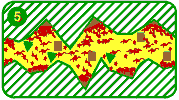  - standard lube - standard lube - particles of contaminats - particles of contaminats - metal particles - metal particles - уюдн particles - уюдн particles
|
This operation is designed to ensure tight contact of уюдн particles with each other and the surface layer metal. This is provided by:
At each point of the friction surface the electromagnetic microfields orient уюдн microparticles in a certain order. The absolute adhesiveness ensures restoration of the intercrystalline particle interaction forces, while the microrelief projections on contact also pack the particles. As a result of the sueface work-harding the surface becomes of such density, that in terms of hardness it surpasses metal, on which уюдн compound is being worked on (Fig.5). |
|
|
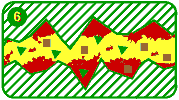 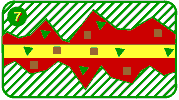  - standard lube - standard lube - particles of contaminants - particles of contaminants - metal particles - metal particles - уюдн particles - уюдн particles
|
The above described operations of their own result in more efficient wear protection, than any standard lubricants and additives can ensure. The heat release at the surface is dramatically reduced and the oil wedge, though contaminated, is more effective. Due to compact work-hardening there is ensured a tight contact of уюдн microparticles and the corresponding additions thereto with the metal of the near-surface layer of the contact spot. In the presence of catalysts and due to the energy produced, there is initiated formation of new crystals with more spatial crystal lattice (Fig.6). The resulting bulk of the crystals start to "lift" over the surface of the contact spot and make up for the wear. The remaining уюдн particles accumulate on the surface of the forming layer and level it off. The thickness of the layers is proportional to the quantity of the particles, work-hardened into the relief microrecesses, and to the energy, released due to friction and contact, i.e. is a function of wear (Fig.7). The layer thickness is regulated automatically. As long as the friction and contact energy exists, the layer keeps growing. The growth results in compensation of clearances, reduction of the energy release on the surface. All this leads to termination of the substitution reaction and inhibits further growth. |
[Technology] [Products] [Consultations] [Links] [News] [Site map] [Contact]
© WM-e-Shop.com, 2000 - 2005
"XADO-technology"
